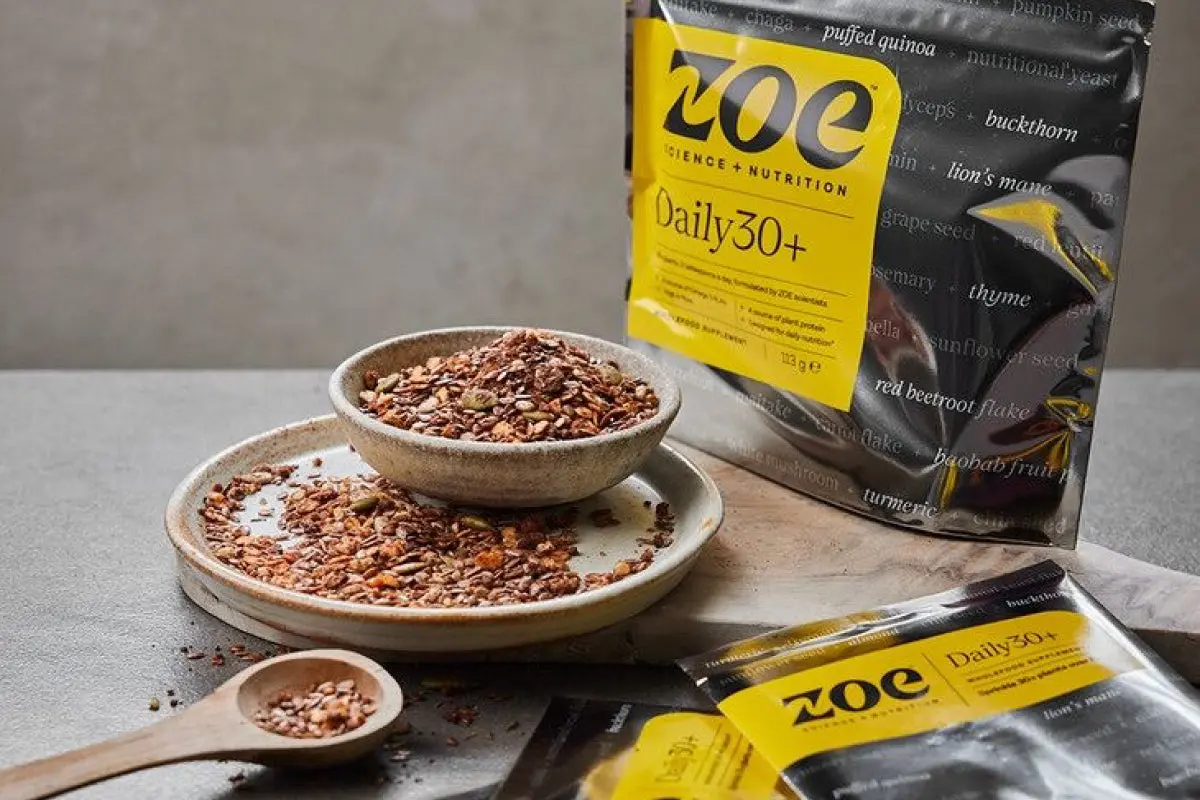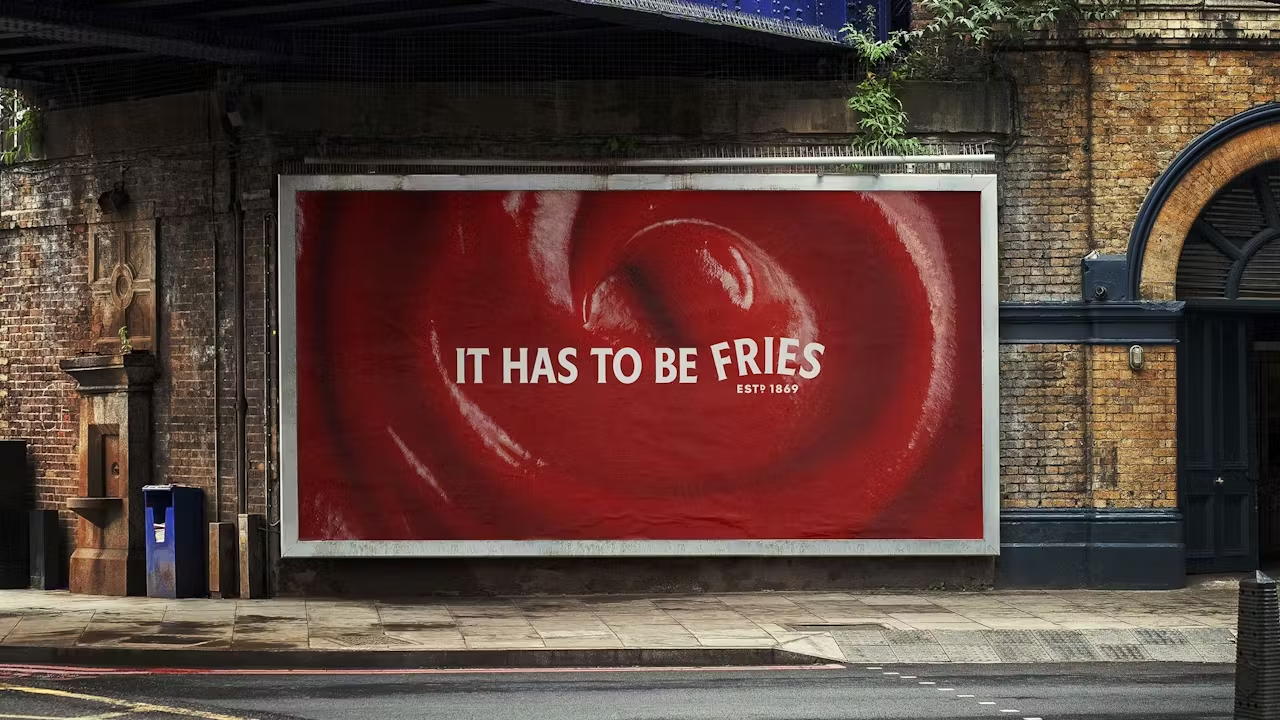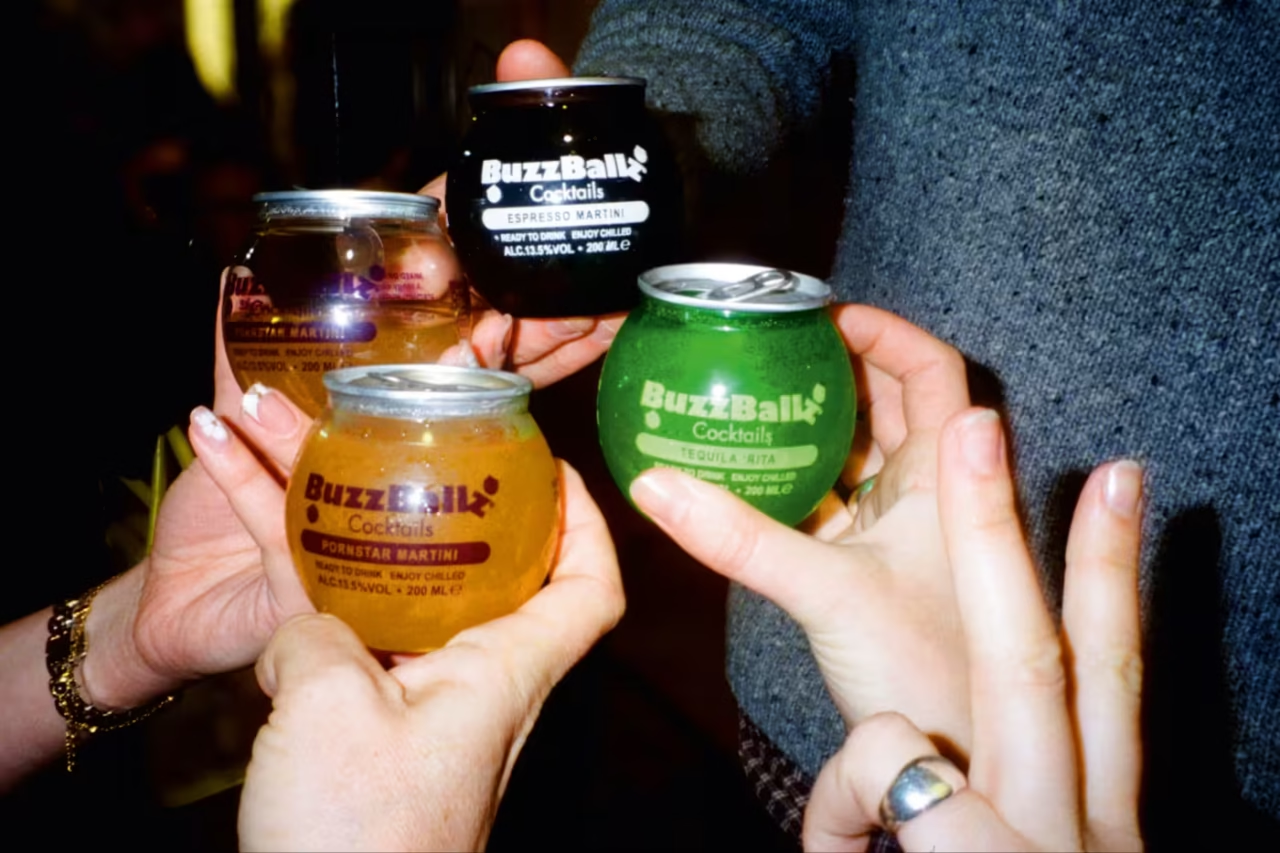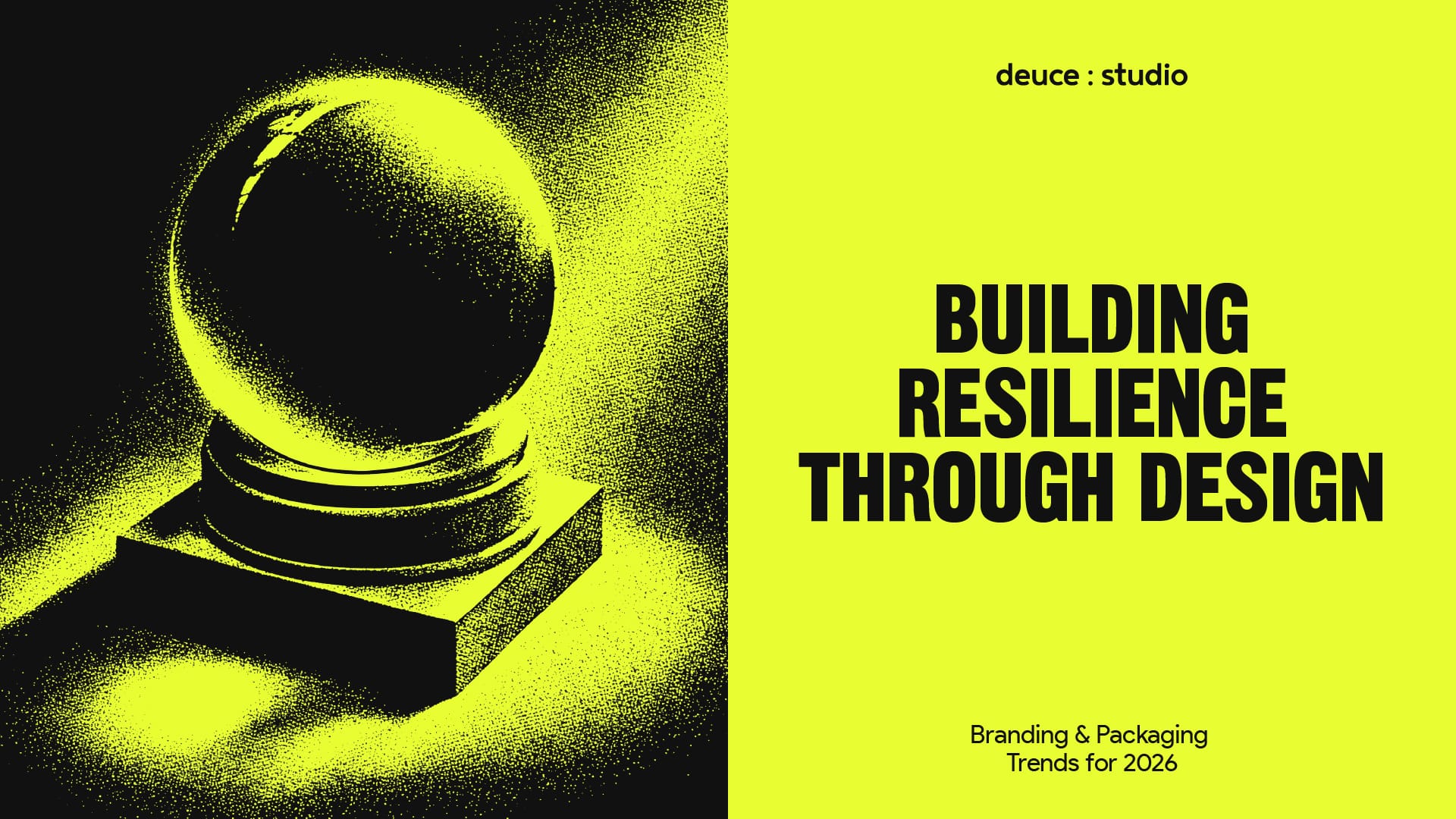A New Kind of Connection
A recent study found that 66% of consumers say they want to improve their ability to cope with constant uncertainty. And honestly, who can blame them? After everything we’ve collectively experienced over the past few years – pandemic disruptions, supply chain chaos, climate concerns – consumers are looking for a bit of security and boy, do we get it.
It presents a real opportunity for brands to stand out from the crowd by asking: how can our brand actually help people feel more grounded and empowered in their daily lives? Below, we are going to explore some trends that will most likely reshape how we view, brand and buy food and drink in 2026.
1 – Variety is the spice of life
Protein and fibre have definitely been having their moment. It’s hard to be on social media without encountering content about the benefits of these nutrients and whether we’re getting enough. And while they remain valuable components of a well-rounded modern diet, there might be space for something else to emerge alongside them in 2026. As consumers become ever more savvy about what goes into their bodies, so have their interests in dietary variety and products with short ingredient lists (SILs). This is in contrast to the “hero-ingredient”- focused products we’ve seen in recent years, which, in reality, tend to have lengthy ingredient lists we would rather avoid.
This collective protein-fatigue could open up interesting possibilities for how brands reconnect with consumers. Rather than centring everything around one standout ingredient or nutrient, there is an opportunity to celebrate simplicity, highlighting what’s absent and demonstrating care through transparency, by creating a visual language that supports curiosity and healthy living.
Brands might spotlight their clean ingredient lists while offering gentle inspiration or suggest interesting ways to add variety to meals with their products beyond the familiar “protein, veggies, starch” template so many of us default to. The opportunity is to design branding and packaging that invites creativity, personal expression and variety, rather than prescribing a single solution.
ZOE’s Daily30+ offers one example of this approach. With over 30 different plants designed to be added to existing meals, it supports dietary diversity while maintaining transparency, creating something that feels more like a helpful companion than a goal-fulfilling product.

2 – Back to the Future
People are craving a bit of stability and are looking to the past to find that connection, but not in a “back in my day” sort of way. They are looking for the grounding and simplicity that traditional practices represent. In a constantly disrupted, hyper-digital, AI-mad world, something is reassuring about things with heritage.
Heritage doesn’t mean the brands that have been around forever and stocked from corner shops to Harrods. It’s the brands that communicate more than their backstory; it’s about the feel of the brand that it is the custodian of the culture it represents. Consumers are seeking brands that actively honour tradition while making them relevant for today.
This doesn’t mean script typefaces and a logo that includes a moustachioed man with a monocle and top hat; it’s about being inspired by craftsmanship and detail. It should invite the consumer to learn about the deeper story—your product and its origins, whether that is a traditional fermentation process, a seasonal eating practice, or a classic preservation method. It’s about creating that emotional connection and security that the product they are buying will fulfil their need.
For example, a material can really reinforce a brand’s heritage. Glass bottles and jars convey a sense of permanence and trustworthiness that plastic and cardboard can’t match. Even aluminium cans are getting the much-needed reputational glow-up. Like glass, aluminium is infinitely recyclable, and when aligned with the ever-growing trend toward refillable products, it becomes a wise, sustainable choice that honours traditional values of resourcefulness and reusability. The key is selecting materials that feel considered and meaningful. Materials that serve you, the consumer, and, importantly, the planet.
Everyday heroes
This trend is a massive opportunity for centre aisle products (think ambient, canned and preserved foods). Often overlooked from a design perspective, consumers are developing greater respect for the “tried and true” shelf-stable options not only for financial reasons but also for emotional reasons, and, as such, they deserve the same love and affection we give to the more premium lines.
An example of heritage confidence in action: Heinz recently launched outdoor advertising campaigns in which it dropped its logo entirely, relying solely on its distinctive typeface, one that draws on 156 years of brand history.

They’re so confident in their cultural presence that they can remove their own name and trust you’ll still recognise them instantly. This is the kind of move only available to brands that have achieved genuine iconic status. But here’s the opportunity for newer brands: heritage is a differentiator. While Heinz leverages 156 years of history, you can create yours starting now. Invest in design elements that feel timeless rather than trendy — classic typefaces and traditional craftsmanship cues — because they signal quality and permanence.
Craft origin stories that anchor your branding and packaging in authenticity, celebrate your artisanal methods, and design with the gravitas of brands that have stood the test of time. It’s about how intentionally you build trust and longevity into your brand DNA from day one. In a world of disposable trends and fleeting aesthetics, brands that embrace heritage, storytelling, and design will cut through the noise. The gap between Heinz and newcomers isn’t just time; it’s the strategic decision to build something that feels enduring rather than ephemeral.
3 – Don’t tap it… Whack it!
In 2025, the experiential aspect of food and drink brands went viral, and we think that trend is continuing to evolve. Brands are starting to look at how their branding, packaging, and communication can be made multisensory, creating opportunities for their products to excite and entice before ever tasting them.
Think beyond how the packaging sits on the shelf, but for example, how does it feel in the hand? If your brand is premium, having a cardboard box that feels light and empty might create the wrong impression. Textures and finishes can convey quality and craftsmanship before a purchase is even made, helping further communicate your brand’s story.
Colour is another area often overlooked, with brands frequently looking to conform rather than differentiate. Colour is a tremendous emotional evoker, so think hard about how you sit in the market and what you want to convey.
Another area to consider is the opening experience. The smell, the look of the product in its packaging, some brands are even beginning to explore wider-rimmed cans that specifically enhance aroma. Consuming food and drink is as much about experience as it is about taste and is even more critical in our hyper-digital world.
A brand that effectively uses a multi-sensory experience in its product and packaging is the viral, ready-to-go cocktail brand Buzzballz. They are bright, round, gaudy and perfect for shoving in your bag or grabbing to drink on the train with mates. Buzzballz are nice to hold, have a fun tactile feel, evoke unbridled fun in every way, and are a perfect example of a brand that uses everything it has to show why it exists. They remind me of school discos – getting hyper on sweet sugary drinks that they would sell you for 50p, only with alcohol!

Questions Worth Exploring
As 2025 comes to a close, you are probably beginning to plan for 2026, and we have put together a series of questions that might help to spark some valuable conversations with your teams.
SIL and variety:
How might we shift from prescribing a single solution to inviting creativity while celebrating what’s in (and what’s not in) our products?
Heritage:
How might we show that we’re custodians of something meaningful, and not just another product on the shelf?
Sensory experience:
How might we design packaging that people can feel, see, and smell, and that they want to share, turning every touchpoint into something memorable and authentic before they even taste the product?
Formats:
Are we positioning shelf-stable and preserved options in a way that honours their practical value? Does our brand narrative align with the growing appreciation for preparedness and resourcefulness?
Looking Ahead: Building Brands That Truly Support People
As Millennials move through their late 20s to mid-40s, they’re looking for deeper meaning in their choices. And honestly, aren’t we all?
We’re not just building awareness. We’re creating touchpoints that genuinely help people feel like they’re thriving, not just getting by. Your packaging isn’t just a container or a billboard; it can be a source of comfort, guidance, and even joy in uncertain times.
The great news is that this more thoughtful, empathetic approach to branding actually beautifully supports business goals. Branding and packaging that genuinely help people navigate complexity and find pleasure in daily routines are the ones building the kind of loyalty that creates sustainable growth. The trends emerging in 2026 suggest consumers are absolutely ready to reward brands that see them as complete people with diverse needs, cultural connections, and sensory experiences worth honouring.
As you develop your strategies for the year ahead, remember that resilience isn’t just something consumers need to build on their own. It’s something we can actively support through thoughtful design, authentic storytelling, and truly authentic experiences. We’re all navigating uncertainty together, and brands that acknowledge that, while still delivering great products and experiences, are the ones that will genuinely thrive.
Here’s to building brands with purpose and personality.
If you are looking for a branding and packaging project, then let’s talk.
Deuce Studio is an award-winning, London-based branding and packaging design agency.
